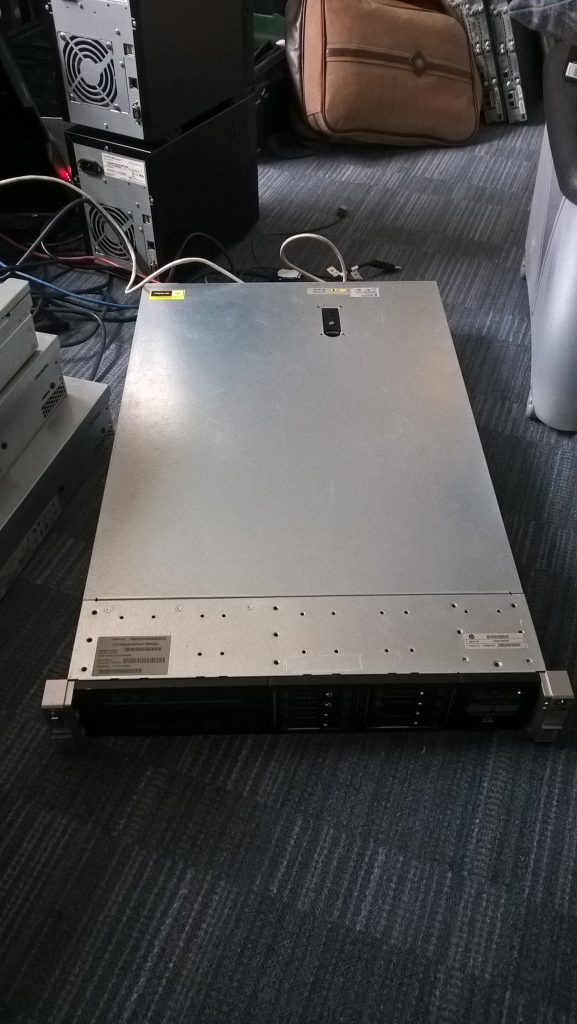How to Gently Retire an Old Laptop: A Practical Guide
In a world driven by digital advancements, owning a reliable laptop is more crucial than ever. But what happens when your trusty old device teeters on the brink of digital obsolescence? This is the dilemma faced by many individuals, including a friend of mine whose laptop is, quite literally, hanging on by a thread. Over five years old, this budget model has survived multiple drops, sports a detached screen, exposed wiring, and requires a monitor to function. Despite its valiant service, and the fact that it technically still works, it’s clearly time for a replacement. However, reluctant parental approval hinges on the old machine finally giving up the ghost. So, how can one responsibly and gently ease a laptop into that final shutdown?
The Art of Laptop Euthanasia
Before diving into the technicalities, it’s important to establish a fundamental ethical standpoint. Deliberately sabotaging a laptop is generally ill-advised and ethically questionable. Modern technology’s eco-footprint is substantial, and proper disposal must be a priority. Our focus should be on understanding signs of decline and preparing for an inevitable transition, rather than forcing premature termination.
Understanding Signs of an Impending Laptop Failure
No machine is built to last forever, especially budget laptops. Recognizing signs of imminent failure can aid in a strategic transition.
1. Sluggish Performance:
- Symptoms: Slow startups, freezing, and lagging applications.
- Reason: Aging hardware, limited RAM, or an overburdened hard drive can cause these issues.
2. Overheating:
- Symptoms: The device becomes hot quickly, fans run loudly and constantly.
- Reason: Dust accumulation, worn-out fans, or degraded thermal paste could lead to overheating.
3. Physical Damage:
- Symptoms: Cracked screens, exposed wires, damaged ports.
- Reason: Physical drops and mishandling typically cause such damage.
4. Battery Issues:
- Symptoms: Reduced battery life, device won’t turn on without being plugged in.
- Reason: Battery cells degrade over time due to regular charge cycles.
5. Software Glitches:
- Symptoms: Frequent crashes, unresponsive applications.
- Reason: Corrupted system files or outdated software.
Preparing for the Inevitable: Responsible Transitioning
Instead of rushing to claim an accidental death, planning for a transition is wiser. Here’s how you can prepare:
Backing Up Data:
Data preservation is paramount. Use external hard drives or cloud services like Google Drive or Dropbox to back up important files. Ensure that all valuable photos, documents, and applications are safely stored.
Research for a Replacement:
Understanding the specific needs and budget is crucial. Consider factors such as processing power, graphics capabilities, portability, and battery life for your next investment. Websites like Amazon, Best Buy, and various tech forums provide ample reviews to make an informed choice.
Dealing with Data Security:
Before disposing of or recycling your old laptop, ensure all personal data is deleted. Use tools like CCleaner for secure data removal or consider reinstalling the operating system to purge information effectively.
Eco-friendly Disposal and Recycling
Laptops contain materials and chemicals harmful to the environment. Proper disposal through recycling programs is essential.
Electronic Waste Recycling Centers:
Most cities offer e-waste recycling where devices are disposed of responsibly. Brands like Dell or Apple often have trade-in or recycling initiatives.
Donating for Parts:
If the laptop still has operational parts, consider donating to organizations that refurbish electronics or provide parts for educational projects.
Hypothetical Methods of ‘Gentle Inducement’
While ethically challenging, some might consider ‘encouraging’ failure in unavoidable circumstances. However, it’s crucial to note these methods risk damaging the laptop permanently and should never be performed unless you are ready for the consequences.
Overloading the Hard Drive:
Filling up disk space with large files could slow performance. However, it can also increase wear and strain on disk drive operations.
Operating in High Dust Environments:
Running the laptop in dusty conditions might clog ventilation, leading to overheating. Unfortunately, this could be damaging to the hardware, beyond simple end-of-life.
Excessive Multi-tasking:
Running multiple heavyweight applications simultaneously can stress an underpowered CPU and reduce the lifespan of the device. But like overloading, it’s not a guaranteed, nor an immediate solution.
Conclusion
Ultimately, the life cycle of your laptop doesn’t have to end in a frustrating surprise. Recognizing the signs of age and preparing adequately can make the transition smooth, allowing for responsible disposal and data preservation. While the temptation to force a faster replacement may be strong, following a strategic and ethical approach considerably outweighs the impulse for deliberate damage.
The journey with our digital devices is one filled with milestones, occasional frustrations, and a bittersweet end. As one door closes, another opens – equipped with the latest technology and opportunities just waiting to be explored. As we stand on the verge of innovation, let’s ensure our past devices are given the dignified, eco-friendly send-off they truly deserve.
Share this content:




Comment
Thank you for sharing this insightful guide on gracefully retiring an old laptop. It’s refreshing to see a focus on ethical considerations, especially in our tech-driven world where e-waste is a significant concern.
As someone with technical experience, I would like to emphasize the importance of assessing the specific hardware issues before making decisions about transitioning to a new device. Handling signs of aging, such as sluggish performance or overheating, doesn’t always require immediate disposal. Upgrading components, like adding RAM or switching to an SSD, could extend the laptop’s lifespan effectively and potentially save costs.
Additionally, in terms of data security, it’s crucial to utilize disk-wiping tools that are compliant with data protection regulations, especially if sensitive information is involved. Beyond CCleaner, consider tools like DBAN (Darik’s Boot and Nuke) for thorough data erasure. Always verify the data removal process to avoid any future data breaches.
On the topic of eco-friendly disposal, collaborating with local tech organizations for e-waste recycling can often lead to community benefits, such as educational programs. It’s worthwhile to investigate potential partnerships that promote tech sustainability.
Lastly, while the hypothetical methods presented could ‘induce’ failure, I would advise against them. These methods may not only lead to permanent damage but may also result in unintended data loss that could have been avoided with proper transitions. Always aim for responsible
If you’re looking to intentionally cause a laptop to fail, I must advise that doing so is generally unethical and can be harmful to the device, environment, and even yourself. However, for educational purposes, some common methods that have been historically used include overloading the hard drive with excessive data, subjecting the device to physical stress such as dropping or exposing it to dust and overheating environments, or running resource-intensive applications simultaneously to strain hardware components. Please note that deliberately damaging hardware can lead to irreversible damage, void warranties, and create environmental hazards due to improper disposal. If your goal is to retire an old laptop responsibly, focus on data security by securely wiping personal information and recycling through authorized e-waste programs. Should you need further assistance on proper disposal or hardware testing, feel free to ask!